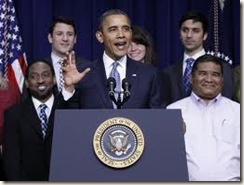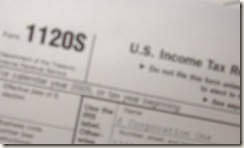Congress passed a $150 billion economic package Friday, extending for the rest of the year a payroll-tax cut for 160 million workers and unemployment benefits for millions of others.
The rare bipartisan agreement also would preserve Medicare payment rates to physicians.
The House voted 293-132 to approve the plan. Minutes later, the Senate agreed, 60-36. President Obama has promised to sign it. After the vote, lawmakers began a one-week recess.
Under the bill, Social Security taxes for workers would remain at their current 4.2 percent level this year on wages up to $110,100. Friday's votes ensure that the average worker earning $50,000 a year would continue to receive a weekly break of $20.
Medicare payments to doctors, scheduled to drop by 27.4 percent, would stay at current levels. Extended unemployment benefits for people who have been out of work for long stretches would continue, though for shorter periods.
The bill has three major components:
• The payroll tax: The extended tax cut could provide about a 0.6 percent increase in the gross domestic product, the sum of all goods and services produced in a year, some economists said, enough to help give the still-fragile economy a boost.
• Medicare: The "doc fix" would keep payments to physicians and other health-care providers at current rates for 10 months.
• Unemployment benefits: Most Democrats have argued there's no need to pay for such aid with budget cuts elsewhere or increases in revenue during tough economic times; Republicans insisted not only on paying for the benefits, however, but also on making changes. The current maximum duration of benefits, 99 weeks, would remain until May. The maximum then would drop in stages, in most cases to 79 weeks during the summer and 73 in September. The maximums depend on a state's unemployment rate.
States would be allowed to drug-screen applicants who lost their jobs because of drug use or are required to get drug tests for their jobs.
Not everyone was pleased about the compromise bill.
The payroll-tax break would cost about $94.5 billion, and it wouldn't be paid for. The other provisions, costing about $49.5 billion, would be offset by a series of budget reductions and revenue raisers, including auctioning part of the electromagnetic spectrum that TV broadcasters use, cutting money aimed at improving preventive health care and increasing new federal employees' pension contributions.
Some Democrats complained the biggest cut hit federal workers because of a plan to produce $15 billion in savings by requiring new federal employees to contribute an additional 2.3 percent to their pension plans.
"Nobody is targeted in this bill other than federal employees," House Minority Whip Steny Hoyer, D-Md., said during debate. "Enough is enough," said Rep. Chris Van Hollen, D-Md., who negotiated the plan to wall off current federal employees from the pension-payment increase. Both voted against the bill.
 If you have a corporation or file a Form 1120 or 1120S with a December 31st year end and you have not filed a 2011 tax return, it is due on March 15th. If you have not yet filed your 2011 tax return call or email us to immediately to ensure we file an extension for your company.
If you have a corporation or file a Form 1120 or 1120S with a December 31st year end and you have not filed a 2011 tax return, it is due on March 15th. If you have not yet filed your 2011 tax return call or email us to immediately to ensure we file an extension for your company. 





 Changing from a C corporation setup to the S corporation setup can be beneficial, but there are numerous factors to consider. With the March 15, 2012 deadline for 2011 fast approaching, you should seek guidance for your situation.
Changing from a C corporation setup to the S corporation setup can be beneficial, but there are numerous factors to consider. With the March 15, 2012 deadline for 2011 fast approaching, you should seek guidance for your situation. 
 wages was extended through February 29, 2012.
wages was extended through February 29, 2012.